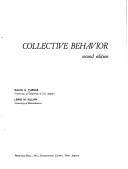| Listing 1 - 10 of 374 | << page >> |
Sort by
|
Book
ISBN: 1412371678 Year: 2009 Publisher: Chicoutimi : J.-M. Tremblay,
Abstract | Keywords | Export | Availability | Bookmark
 Loading...
Loading...Choose an application
- Reference Manager
- EndNote
- RefWorks (Direct export to RefWorks)
Book
ISBN: 0710034318 9780710034311 Year: 1970 Publisher: London: Routledge & Kegan Paul,
Abstract | Keywords | Export | Availability | Bookmark
 Loading...
Loading...Choose an application
- Reference Manager
- EndNote
- RefWorks (Direct export to RefWorks)
Book
ISBN: 0309373484 0309373506 Year: 2015 Publisher: Washington, District of Columbia : The National Academies Press,
Abstract | Keywords | Export | Availability | Bookmark
 Loading...
Loading...Choose an application
- Reference Manager
- EndNote
- RefWorks (Direct export to RefWorks)
"Collective Behavior is the summary of the 2014 National Academies Keck Futures Initiative Conference on Collective Behavior. Participants were divided into fourteen interdisciplinary research teams. The teams spent nine hours over two days exploring diverse challenges at the interface of science, engineering, and medicine. The composition of the teams was intentionally diverse, to encourage the generation of new approaches by combining a range of different types of contributions. The teams included researchers from science, engineering, and medicine, as well as representatives from private and public funding agencies, universities, businesses, journals, and the science media. Researchers represented a wide range of experience - from postdoc to those well established in their careers - from a variety of disciplines that included science and engineering, medicine, physics, biology, economics, and behavioral science. The teams needed to address the challenge of communicating and working together from a diversity of expertise and perspectives as they attempted to solve a complicated, interdisciplinary problem in a relatively short time. This report highlights the presentations of the event and includes the team reports and pre-meeting materials."--Publisher's description.
Book
Year: 1971 Publisher: New York (N.Y.) : Free press,
Abstract | Keywords | Export | Availability | Bookmark
 Loading...
Loading...Choose an application
- Reference Manager
- EndNote
- RefWorks (Direct export to RefWorks)
Book
Year: 1962 Publisher: London : Routledge and Kegan Paul,
Abstract | Keywords | Export | Availability | Bookmark
 Loading...
Loading...Choose an application
- Reference Manager
- EndNote
- RefWorks (Direct export to RefWorks)
Book
Year: 1962 Publisher: Englewood Cliffs (N.J.) : Prentice-Hall,
Abstract | Keywords | Export | Availability | Bookmark
 Loading...
Loading...Choose an application
- Reference Manager
- EndNote
- RefWorks (Direct export to RefWorks)
Book
Year: 1963 Publisher: New York : Free Press of Glencoe,
Abstract | Keywords | Export | Availability | Bookmark
 Loading...
Loading...Choose an application
- Reference Manager
- EndNote
- RefWorks (Direct export to RefWorks)
"In all civilizations, men have evinced dramatic collective behavior--the craze, the riot, the revolution. In Theory of Collective Behavior, the author applies the insights of contemporary sociology in the first work to unify the subject of collective behavior under a single, coherent sociological theory. The treatment is new and controversial. It marks a radical departure from the European social-psychological tradition of Le Bon, Trotter, MacDougall, and Freud, as well as from the American tradition of Ross, Park, and Blumer. Smelser explains why collective episodes occur where they do, when they do, and in the ways they do. He discusses the distinctive social conditions that accompany collective seizures. He also studies the kinds of beliefs that spark collective behavior and explores the relations among simple beliefs of hysteria and wish-fulfillment and the more complex beliefs envisioning the reconstruction of social norms and cultural values. The explanations are based on a theoretical scheme that permits classification and analysis of the social strains that underlie collective outbursts--strains such as ambiguity, deprivation, conflicts of norms, and conflicts of values. The greater part of this volume is devoted to empirical and comparative applications of Smelser's theory to several types of collective behavior. Individual chapters treat isolated phenomena such as the panic and the craze (including the financial boom and certain types of religious revivals); in these chapters the author has drawn from the literature of sociology, history, anthropology, and psychology, integrating the provocative but unorganized material hitherto available"--Jacket. (PsycINFO Database Record (c) 2013 APA, all rights reserved).
Book
ISBN: 1611858879 Year: 2021 Publisher: London, England : Grove press,
Abstract | Keywords | Export | Availability | Bookmark
 Loading...
Loading...Choose an application
- Reference Manager
- EndNote
- RefWorks (Direct export to RefWorks)
Book
ISBN: 1429834439 9781429834438 Year: 2014 Publisher: Ipswich, Massachusetts : Salem Press,
Abstract | Keywords | Export | Availability | Bookmark
 Loading...
Loading...Choose an application
- Reference Manager
- EndNote
- RefWorks (Direct export to RefWorks)
This work is designed to provide a solid foundation for the research of various sociological topics. This volume presents a series of essays focusing on matters related to the field of collective behavior.

ISBN: 0131406574 Year: 1972 Publisher: Englewood Cliffs, N.J. Prentice-HAll
Abstract | Keywords | Export | Availability | Bookmark
 Loading...
Loading...Choose an application
- Reference Manager
- EndNote
- RefWorks (Direct export to RefWorks)
| Listing 1 - 10 of 374 | << page >> |
Sort by
|

 Search
Search Feedback
Feedback About UniCat
About UniCat  Help
Help News
News